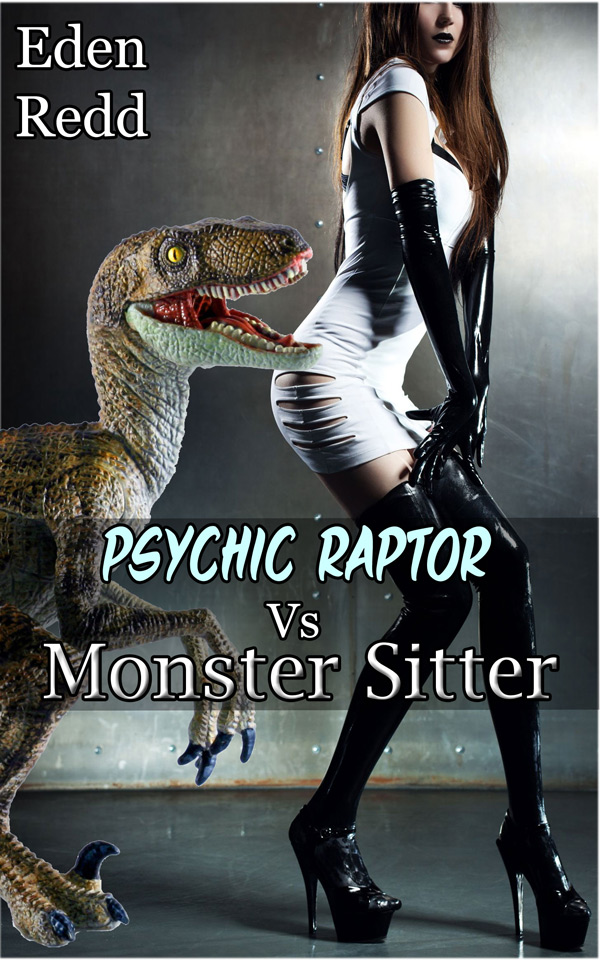What is dinosaur erotica and why are some people into it? An erotic fantasy author explains

Erotic fiction is a fascinating genre of literature. On the one hand authors literally ‘ship’ Ever Given with the Suez Canal. On the other hand, they sketch out non-vanilla blueprints for how male pregnancies would work in the future. Somewhere in the mix are beastly creatures—with an insatiable hunger for eating someone out rather than merely eating them. Introducing dinosaur erotica, a cautionary genre featuring tales written to unlock your darkest fantasies and desires for the ‘XXX-tinct’ creatures.
On a quest to break down its appeal, we knocked on the mystical door of Eden Redd—an erotic fantasy author conjuring up some of the best reads in the genre. From limitless fantasies to anonymous trolling, here are all of the mojos the author had to share.
What is dinosaur erotica?
Dinosaur erotica is a genre of erotic literature that involves sexual encounters between humans and non-avian dinosaurs. “In other words, people and dinosaurs getting it on,” Redd explained, adding how readers can often expect “interesting, hilarious, and titillating stories.”
Pioneered by co-authors Christie Sims and Alara Branwen, dinosaur erotica was quick to generate sales and media interest. “I read an article about the emergence of dino erotica in 2017,” started Redd when asked about her initiation into the genre. “I then did a quick search and found Taken by a T-Rex by Alara Branwen. After reading it I thought it was a fun and interesting story.”
Harbouring a life-long love for writing, the author was initially dubious about venturing into the field and kept many of her ideas and stories to herself. “Alara’s book inspired me to research and try my hand at it,” Redd admitted, later finding joy in writing books without any rules. “I grew up around old-fashioned ideas when it came to writing, but these kinds of books were so outlandish that I couldn’t stop myself from writing my own.”

Tales of limitless fantasies
Dinosaur erotica features self-published short stories with themes typically revolving around scientists and prehistoric female hunters. In Ghost Raptor Seduction, Redd writes about a palaeontologist who is shipped out to a remote site to investigate unusual raptor fossils. In Psychic Raptor vs. Monster Sitter, the author pens a tale of an experienced “monster sitter” who watches over her test subjects including monsters, zombies and occasional killer robots. Redd’s novels sometimes even feature the same dinosaur—thereby triggering one of the most common tropes found in romance novels: jealousy.
When asked about the research and thought process that goes behind her novels, Redd mentioned how she relies on Google searches to find all of the material she needs for the story she is working on. The author also has a small library of dinosaur books for physical reference. “Once I have the characters and situations planned out, I start writing,” Redd added.
Now, sex and dinosaurs have been an age-old dubious topic—and I’m not talking about inter-species mating. Back in January, a group of scientists reconstructed the Psittacosaurus fossil unearthed at a site in northwestern China. With its surprisingly intact orifice, skin and pigmentation, the fossil helped scientists declare the presence of a ‘cloaca’ in dinosaurs. The orifice essentially helped male dinosaurs transfer semen by rubbing their cloacas together with the female. In short, if you were to travel back in time to catch two dinosaurs in the act, you wouldn’t be able to see anything hanging low or wobbling to and fro.
So naturally, I had to ask if these sorts of discoveries hindered the research and imagination which goes behind the steamy scenes. “It has little to no effect on the story for me,” said Redd. “It’s a fantasy story with fantastical situations. Although I can’t speak for other authors, for me, the sky’s the limit.”
With that been said, Redd has dabbled in every single fantastical erotic genre you could possibly think of—be it sci-fi, cyberpunk, gameLit, horror or paranormal romances. With a “supernatural lust for anything involving monsters and strange seductions,” the author has even written up to 1,000 pages of LitRPG fantasy adventures.

The Kardashian of crappy erotica
Almost every erotic genre out there has amassed great deals of criticisms and kink-shaming. Dinosaur porn—a genre with dedicated tags on PornHub—is often frowned upon along with the entire concept of xenophilia. In terms of dinosaur erotica, the genre has been labelled “The Kardashian of crappy erotica.” When asked about Redd’s views on the label, the author outlined how the genre is picked on by people with no imagination.
“If everything doesn’t fit in a neat, little box for them, it’s trash,” Redd said. “Some readers like to try something different and exotic. Some want to laugh at an absurd situation. Some want a break from reality to explore something strange and sensual. It’s perfectly okay to try something and see if you like it.” According to Redd, it’s okay even if the readers don’t find an inclination towards the genre. “I hope they find and read books that speak to them and they enjoy them.”
Now that we’ve nailed down the stigmas surrounding dinosaur erotica, what about the authors? Are they subjected to keeping their identities anonymous in the genre? “Eden Redd is my pen name,” Redd admitted, adding how every author has a reason of their own to use pen names. For Anne Rice and Stephen King, it was to publish works that didn’t fit their brand. But for Redd, it was a move against the expected trolling.
“Before I started publishing my stories, I knew there would be many people who would judge and make my life miserable for no other reason than my odd writings. I hence decided on a pen name for peace of mind. When trolls come to knock anything I’ve written, I can disconnect and have some peace.” Redd also mentioned how it’s not worth fighting these anonymous trolls. “I have stories to write,” she added.

The ‘Rex’ appeal
Now, onto the much-awaited question. Why dinosaurs? What is it about the genre that lures audiences in? Although it may be impossible to break down their appeal altogether, here’s all of the knowledge we’ve gathered so far, coupled with insights from Redd.
“The idea of having sex with a dinosaur is outside the realms of possibility,” said Professor Clarissa Smith, co-editor of the academic journal Porn Studies. In an interview with The Guardian, Smith suggested that the element of fear and permission to think about non-human sexual pleasures may help explain interest in the genre. “It’s a bit like ‘magic’, where all rules become suspended. And for that reason, it allows imaginative risk-taking—which is impossible in more standard couplings.”
Over at Redd’s, the author believes that the demography of her fanbase is mostly male. If you were to scroll down to the ‘customer review’ section under Redd’s books on Amazon, you would also get to witness copious amounts of positive responses from customers who had a “fun, sensual and interesting reading experience.” Although the section also features a couple of 1-star reviews, close inspection of these comments reveals how readers believe that the genre might just not be ‘the one’ for their tastes.
With that out of the way, if you ever feel like exploring the genre yourself, here’s what Redd recommends. “Go in with an open mind and have fun with the stories. It’s not Shakespeare or Hemingway but they are stories written in a different light.” For starters, the author also recommends entrusting an Amazon or Google search to land you at the footstep of the right titles.
As for all of the authors out there itching to try their own hands at the genre, Redd lists out a mental list of dos and don’ts from her own experience: “Read a few books in the genre you want to write in and join Facebook groups or subreddits to see what other authors are doing or saying. It’s okay to ask questions, take whatever advice is given and pick what’s best for you.” Redd also mentioned how authors in the genre have to give themselves the autonomy of deciding what works and what doesn’t.
“If it’s your passion, simply write your story and then write the next one. It takes time and each story will help you practice and get better at it,” Redd said. And as for all of the trolls out there, “Don’t take it personally if no one is interested in your stories at first. The world is constantly moving and people have busy lives.” The author thereby recommends having fun with your writing. “If you’re having fun or showing your passion, readers will see it on the page and follow you. You’ll get better with time and practice and you’ll eventually find your tribe!”




